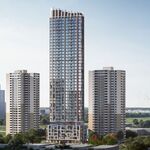jwill
Active Member
Adding GO stations downtown would really be more useful for suburban commuters than local residents. The idea is that commuters can more easily access some major employment areas (like Liberty Village) without having to travel all the way to Union. Most importantly it keeps more people out of Union Station which has serious capacity restraints.
GO travel within the city is priced according to the cost to provide the service. It may seem intuitive that a trip from Union to Exhibition should cost less than a trip from Union to Burlington, but its not quite the case. Because the vast majority or riders travel to and from Union, the seat occupied by the passenger to Exhibition is the sole occupant of that seat for the entire trip, whether he is siting in it or not, because it will be unavailable for any other passengers leaving from Union. So if the trip to Burlington costs $10 000 and the train has $1000 seats, then each seat must generate $10 in revenue (those numbers are fictional). Since the local rider's seat will go almost always unused once he alights, it must still generate close to $10.
GO travel within the city is priced according to the cost to provide the service. It may seem intuitive that a trip from Union to Exhibition should cost less than a trip from Union to Burlington, but its not quite the case. Because the vast majority or riders travel to and from Union, the seat occupied by the passenger to Exhibition is the sole occupant of that seat for the entire trip, whether he is siting in it or not, because it will be unavailable for any other passengers leaving from Union. So if the trip to Burlington costs $10 000 and the train has $1000 seats, then each seat must generate $10 in revenue (those numbers are fictional). Since the local rider's seat will go almost always unused once he alights, it must still generate close to $10.




